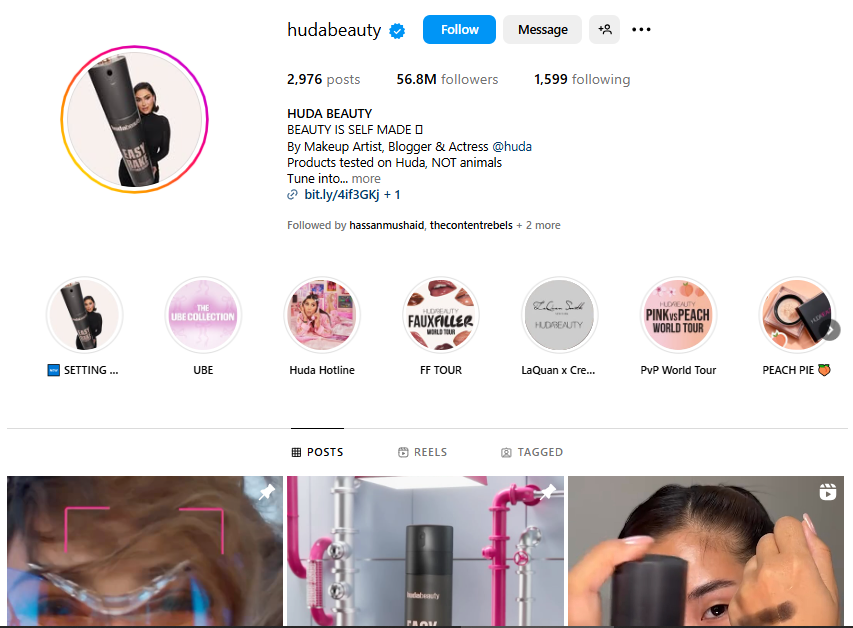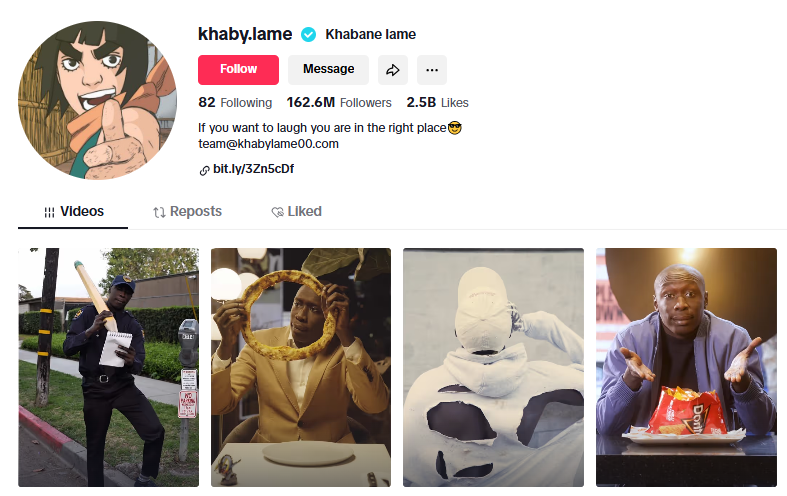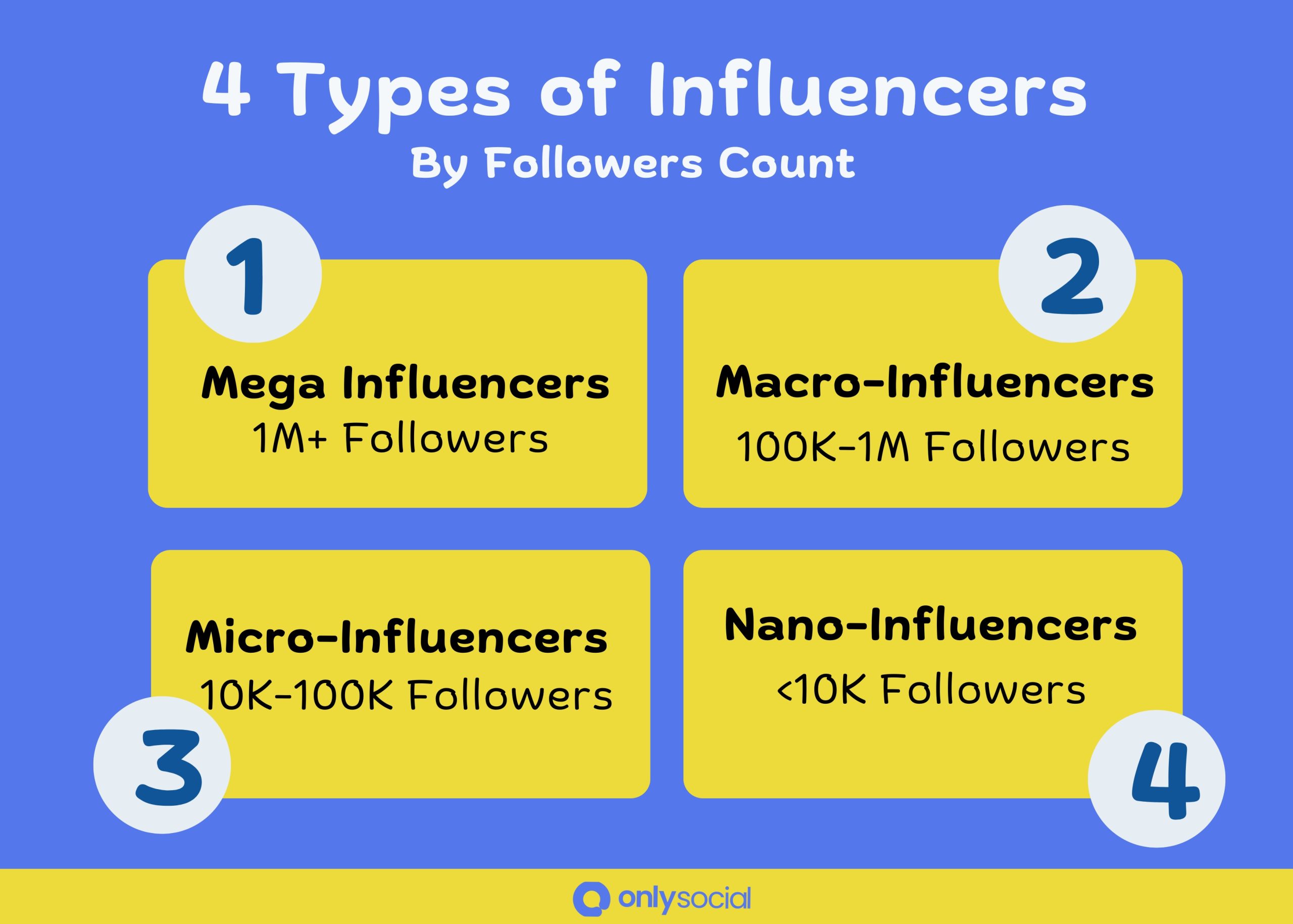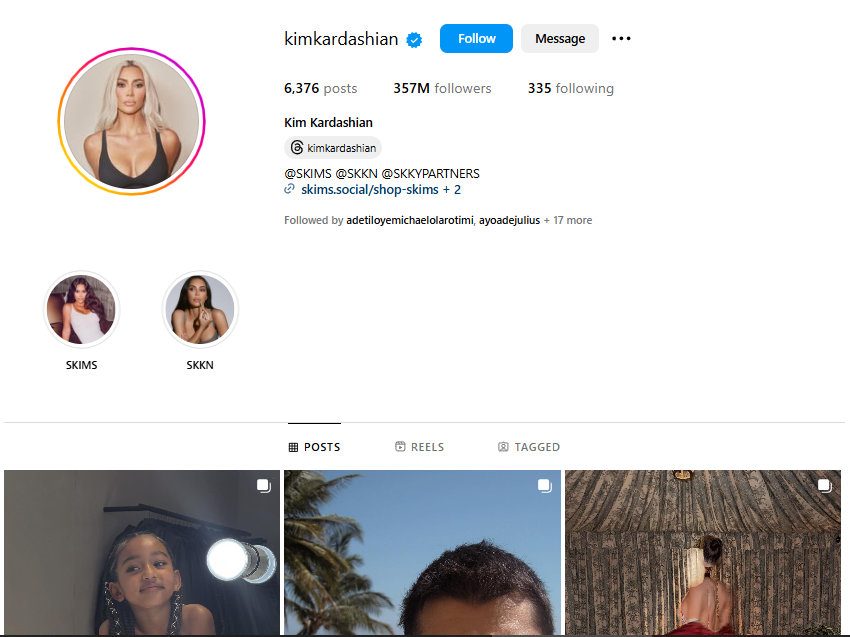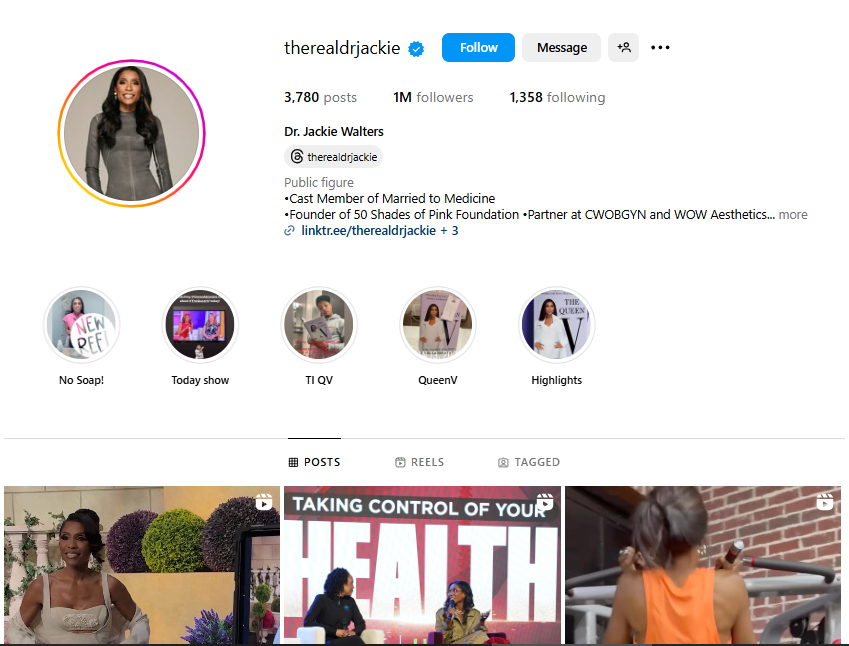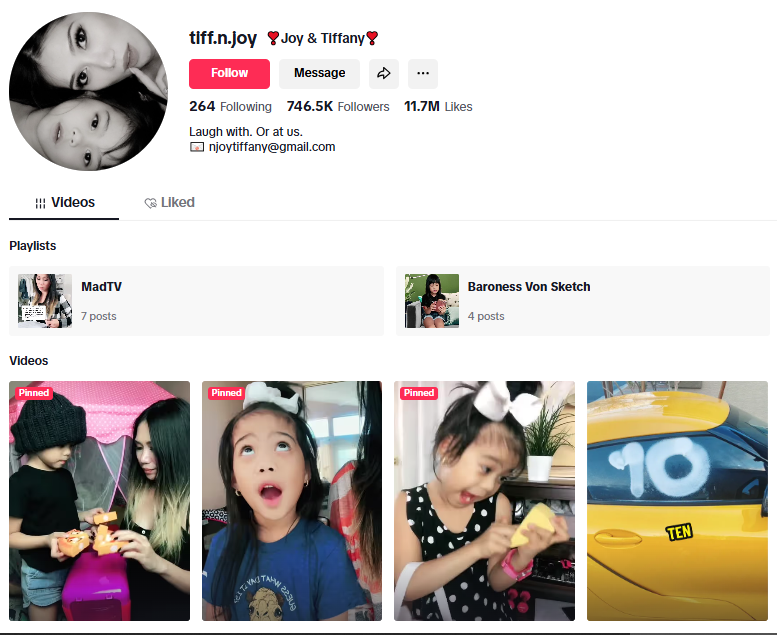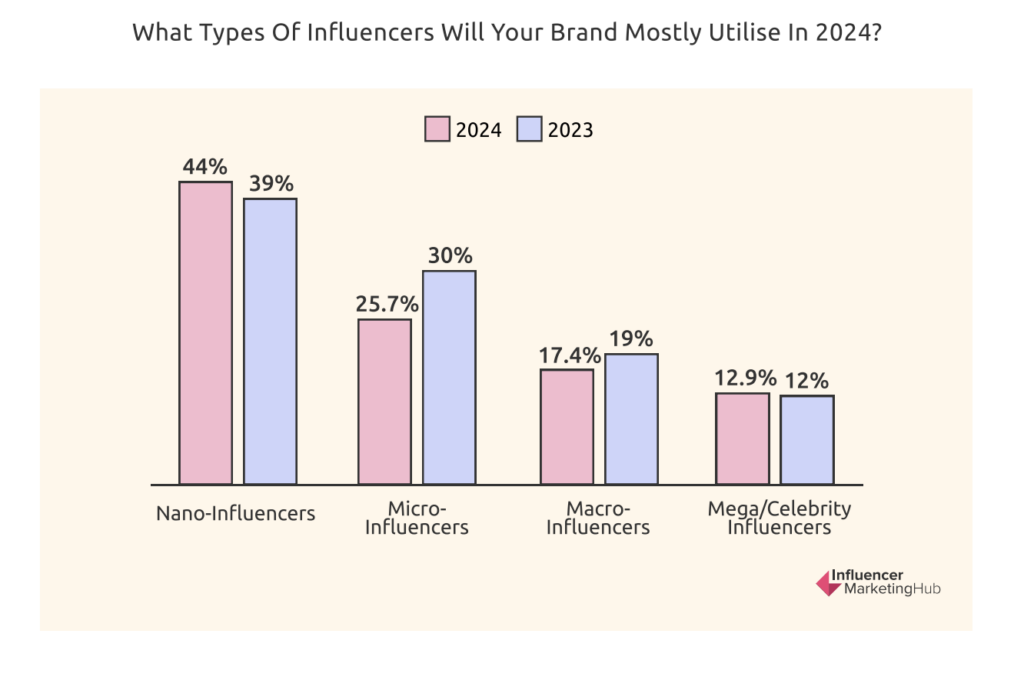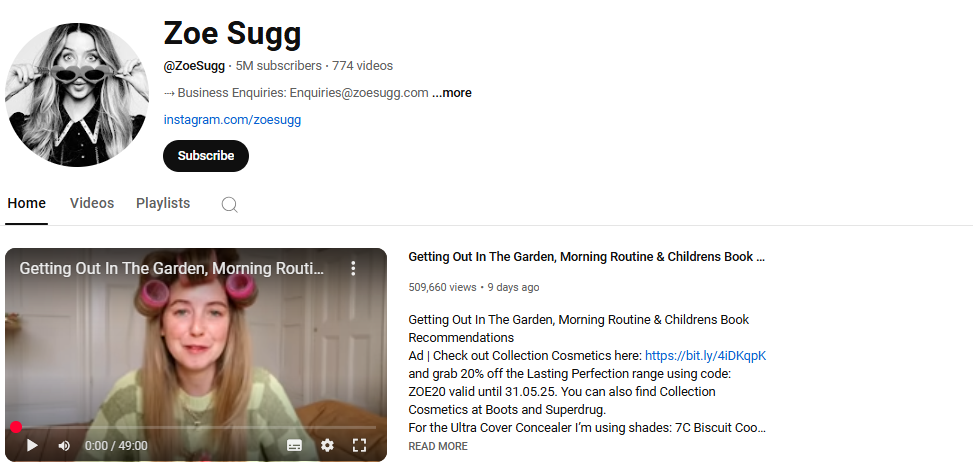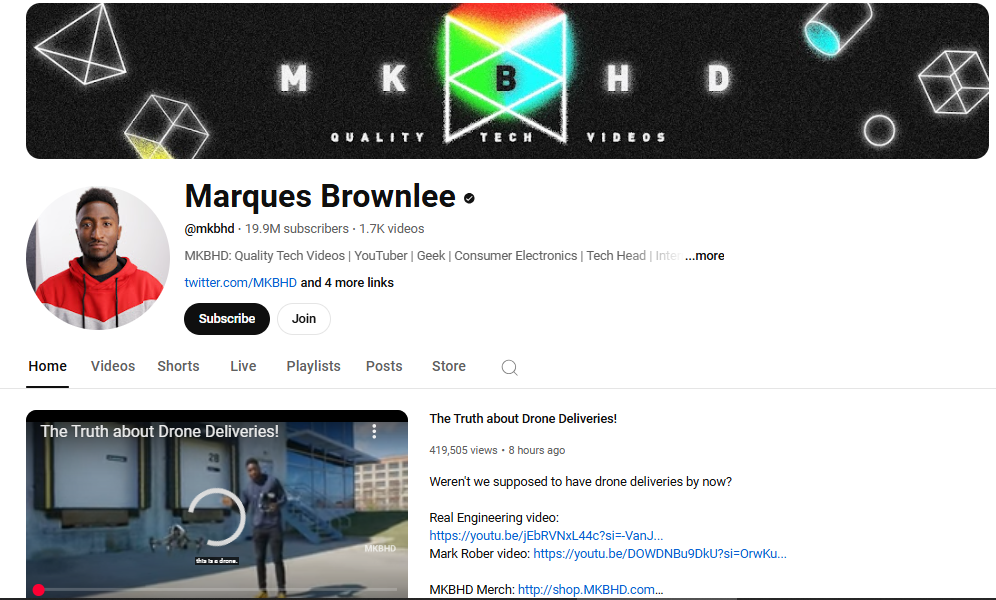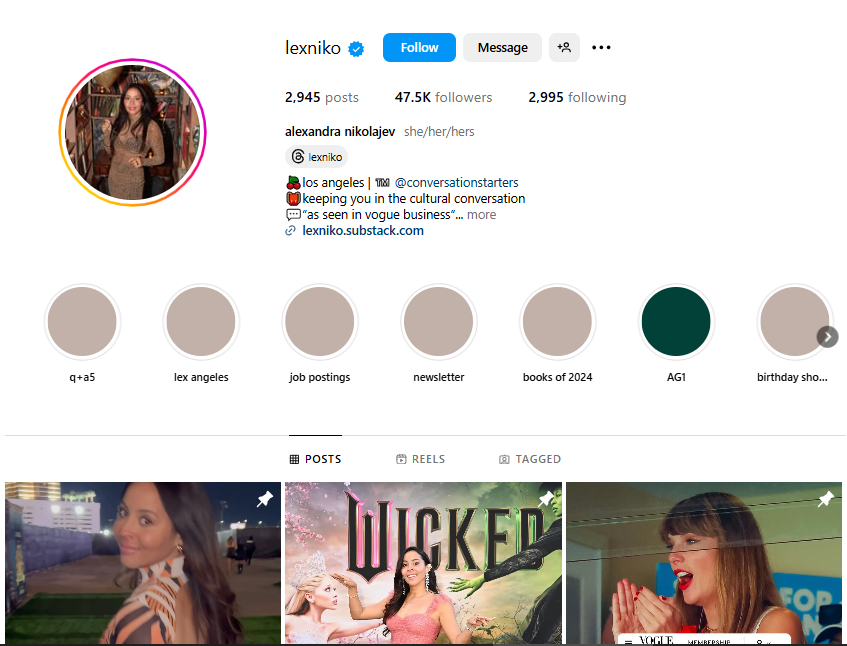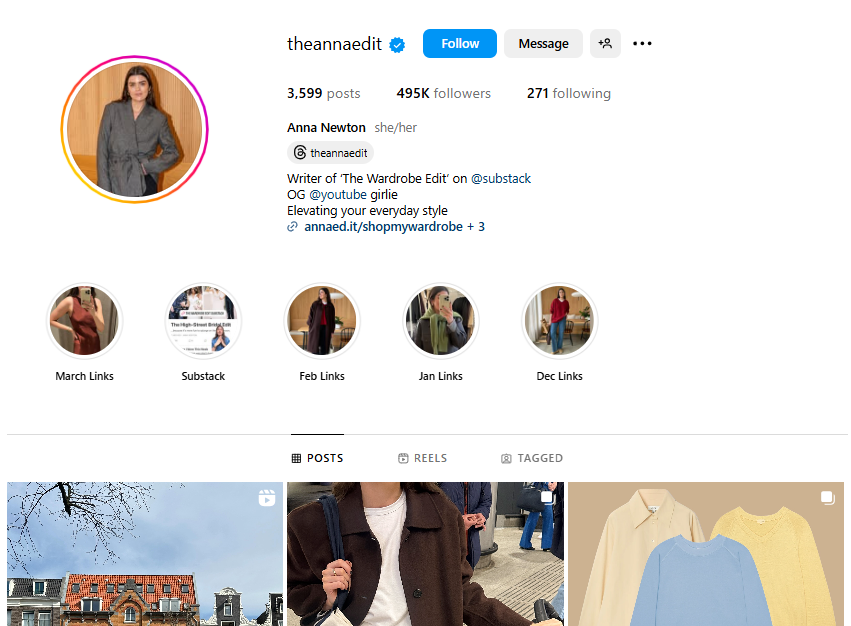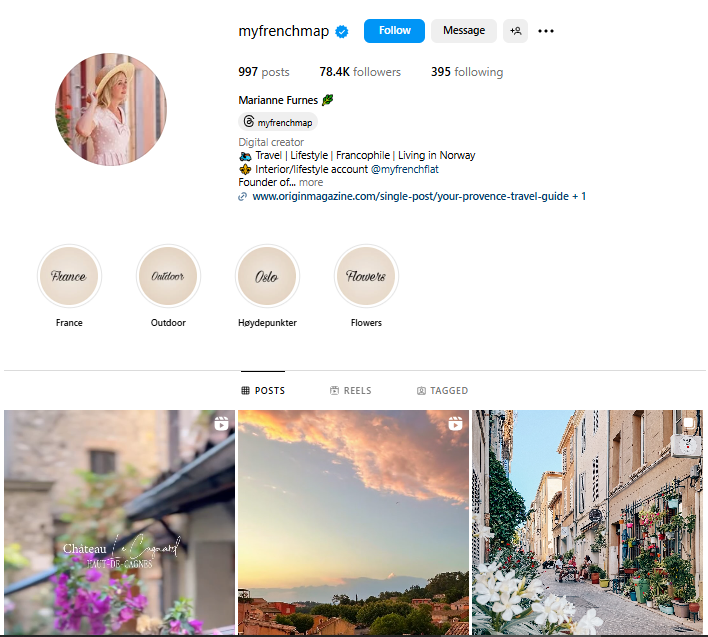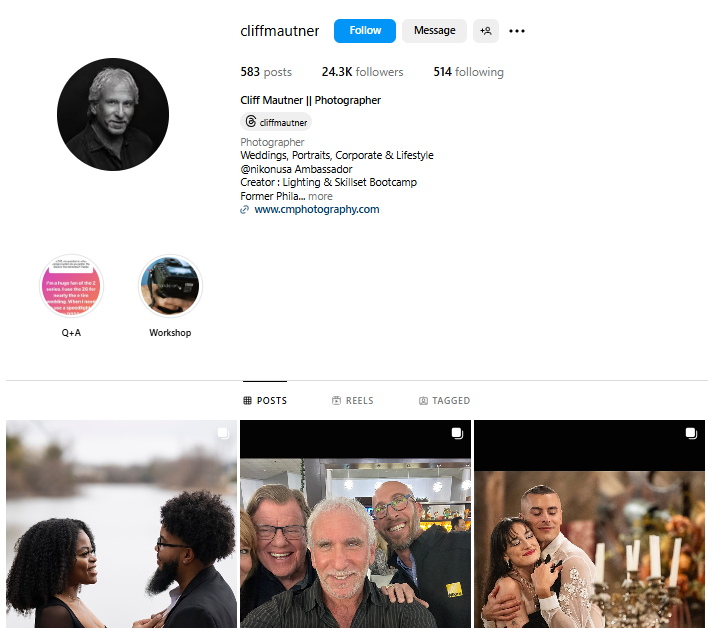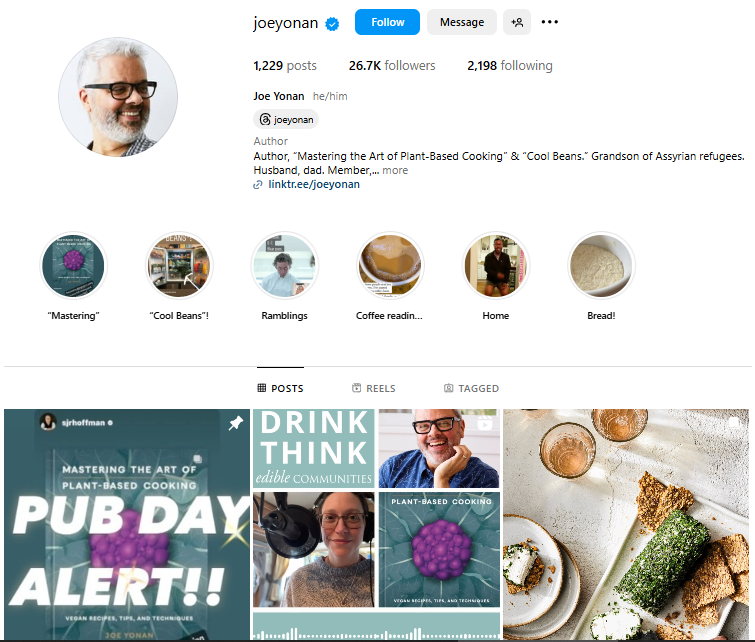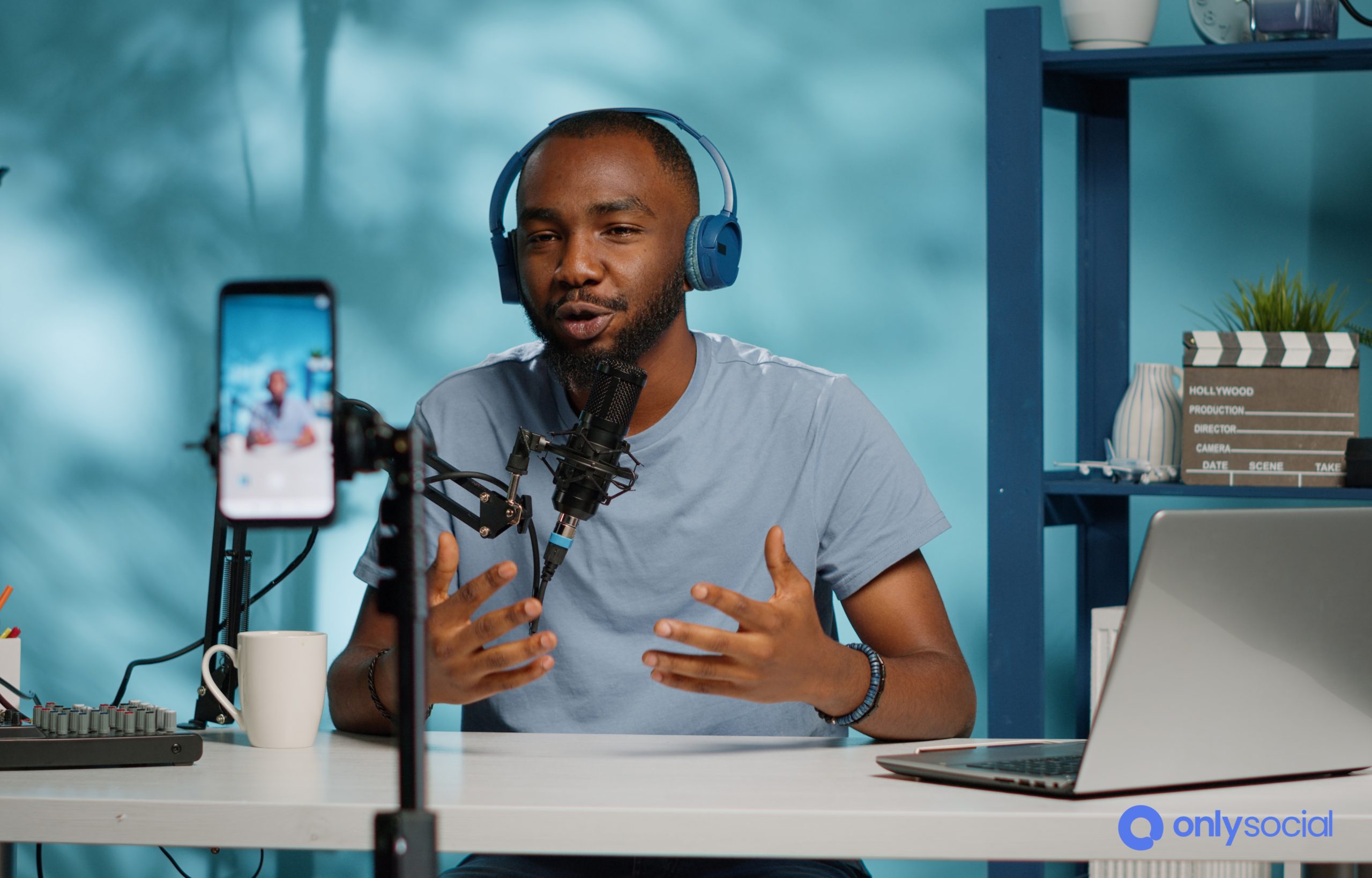15 Types of Social Media Influencers by Follower Count & Industry (2025)
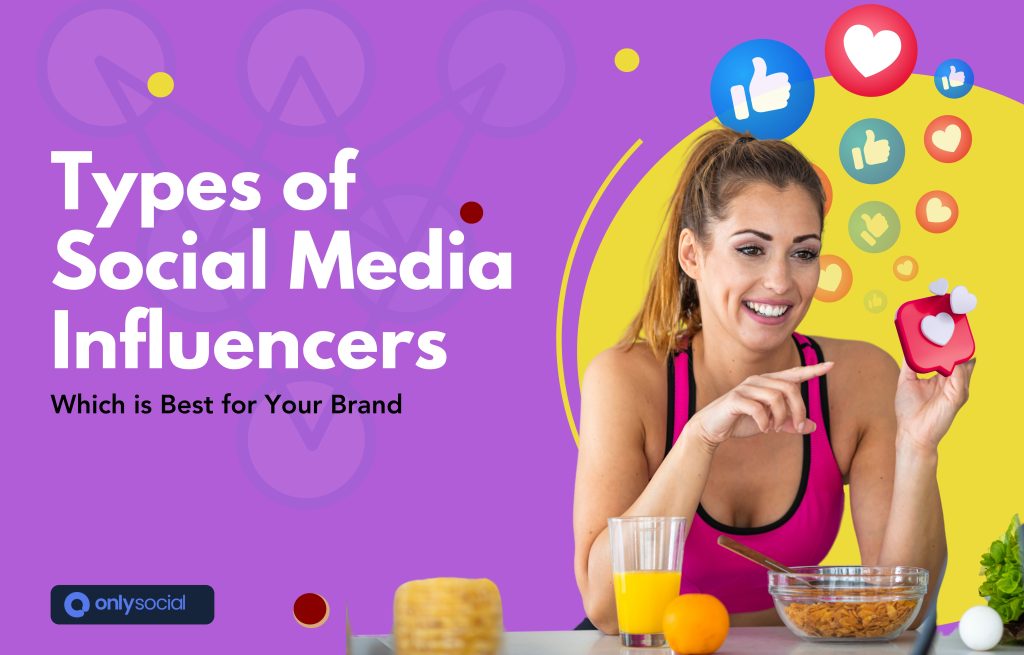
Influencer marketing is a $21 billion industry. That means there are plenty of social media stars ready to boost your brand. But with so many faces and follower counts out there, how do you pick the right partner for your campaign?
Don’t worry – we’ve broken it down into 15 clear categories based on audience size and niche. By the end of this guide, you’ll know exactly which type of influencer fits your goals and budget.
Just keep reading to find your perfect match!
Table of Contents
What Is an Influencer?
An influencer is someone who can shape opinions, spark trends, and guide decisions in a specific niche. They’ve built a loyal following by sharing expertise, honest reviews, or creative content that resonates with people.
On social media, influencers develop personal brands, engage directly with fans, and create content that feels authentic.
Influencers are often grouped by their follower count – from small‑but‑mighty nano influencers to mega stars with millions of followers. Brands tap into these creators as ambassadors, partners, or promoters to reach new audiences in a genuine way.
Examples of well‑known social media influencers include
- Instagram – Huda Kattan (@hudabeauty): Founder of Huda Beauty with over 54 million followers. She posts makeup tutorials, beauty tips, and product launches. Huda is often seen collaborating with big cosmetic brands and promoting her own line.
- TikTok – Khaby Lame (@khaby.lame): With 162 million followers, Khaby became famous for his simple, wordless comedy clips. He is presently one of the most-followed creators on TikTok. Khaby has worked with brands like Hugo Boss and Xbox, proving that humor transcends language.
- Twitch – Pokimane (@pokimane): A top gaming and lifestyle streamer with more than 9 million followers. She partners with tech brands like HyperX and NZXT, creating authentic livestream campaigns that fans love.
Why Use Influencer Marketing?
Influencer marketing is a game changer for your brand. When an influencer shares your products, their followers are more likely to take notice.
In fact, according to a 2024 influencer marketing report, nearly half of all consumers buy something every month because of an influencer’s post. It’s proof that real people trust and act on these recommendations.
Partnering with influencers increases your brand awareness. Their endorsement introduces your brand to new audiences who already trust their opinions.
You get precise audience targeting too. Here, influencers connect you with followers who match your ideal customer profile. This means your message reaches the right people, delivered in a voice they listen to.
Influencer campaigns also drive higher conversions. Interactive content like giveaways, live sessions, and exclusive discount codes make it easy for undecided shoppers to click “buy.”
Plus, influencers build trust by sharing honest experiences and keeping their endorsements authentic. When your brand is featured by someone trusted, your credibility soars.
So, adding influencers to your marketing mix means more eyes on your brand, better engagement, and ultimately, more sales. It’s a smart move that can truly boost your business.
But before you jump to choose an influencer for your brand, you should know the different types of influencers out there so you know which is best for you. Let’s break that down!
4 Types of Social Media Influencers by Follower Count
#1: Mega Influencers (Celebrity Influencers)
Mega influencers are the true heavy hitters of social media – think Kim Kardashian, Cristiano Ronaldo, or Beyoncé.
These creators boast tens of millions of followers across platforms like Instagram, TikTok, and X. Their audiences span many interests and demographics, so when they post about your brand, you reach a massive crowd all at once.
While mega influencers aren’t usually experts in any single niche, they excel at one thing: generating huge awareness. They’ve mastered the art of getting eyeballs – but that reach comes at a premium. Partnering with a mega influencer is usually very expensive.
Also, because their followers are so diverse, you’ll often see top‑of‑funnel results (lots of visibility and brand recall) rather than direct sales.
When to Work with Mega Influencers
- You need a major splash for a big product launch or rebrand
- Your goal is pure brand awareness rather than immediate conversions
- You have a budget that supports high‑cost, high‑impact campaigns
- You want to position your product in front of millions of potential customers
#2: Macro Influencers
Macro influencers sit just below the celebrity tier, with followings between 100,000 and 1 million people. Some well-known macro influencers include Dr. Jackie Walters (1M followers), Brad Lau (591K followers), Ashley Galvin (524K followers), Kiki (510K followers), etc.
Unlike big‑name celebs, most macro influencers earned their audience online – through relatable vlogs, helpful tutorials, or inspiring content that resonated with a specific niche.
These creators combine credibility with broad reach. They’re experts in their fields – whether it’s beauty, food, fitness, or travel – and they command an engaged, loyal audience that trusts their recommendations.
If you want to speak directly to a large but still focused group (think young women interested in wellness or adventure), macro influencers hit the sweet spot.
When to Work with Macro Influencers
- You need both wide exposure and niche relevance
- You want an expert voice to explain your product or service
- Your campaign budget supports mid‑range influencer fees
- You’re targeting a specific demographic, like fitness enthusiasts or food lovers
#3: Micro Influencers
Micro influencers have between 10,000 and 100,000 followers. They aren’t household names but they’re trusted authorities in their niche.
Whether it’s travel, fashion, food, or fitness, micro influencers build tight-knit communities that see them as go-to experts.
Because their audience is smaller and more focused, engagement rates tend to be much higher than with bigger influencers. Fans feel like they know these creators personally, which makes recommendations feel genuine – not like a paid ad.
Brands like Adobe and Squarespace lean on micro influencers to reach targeted audiences with authentic messaging.
When to Work with Micro Influencers
- You want a highly engaged audience that trusts honest opinions
- You need cost‑effective partnerships that deliver niche reach
- You’re launching a product or service in a specific industry (e.g., travel, fashion, fitness)
#4: Nano Influencers
Nano influencers are the smallest players in the influencer world – usually under 10,000 followers. They’re everyday people with real influence in their own circles, like a trusted neighbour, community leader, or local hobbyist.
Because their audience is made up of friends and family, every recommendation feels genuine and personal.
Brands love nano influencers for their authenticity and sky‑high engagement rates.
In fact, the latest Influencer Marketing Hub data shows that 44% of brands prefer to partner with nano influencers in 2025. When a nano influencer shares your product, it comes with a built‑in stamp of trust.
However, the downside is that their reach is small. That means you’ll need to partner with several nano influencers to scale your campaign. But the payoff is real connections and honest word‑of‑mouth buzz.
When to Work with Nano Influencers
- You need authentic recommendations to build trust fast
- You’re targeting a local market or community
- You want user‑generated content from real customers
- You’re launching a small‑budget pilot campaign
- You need genuine feedback before a wider rollout
11 Influencer Niches to Know
1. Health & Wellness Influencers
These creators make living healthier feel simple and fun. They share workout routines, mindfulness tips, and easy recipes that anyone can follow.
When you partner with a health influencer, your fitness gear, wellness apps, or supplements get shown to people actively looking to improve their well-being.
A notable example is Cassie of Blogilates. Her at‑home workouts have built a loyal community because she makes fitness feel doable for everyone.
2. Lifestyle & Vloggers
Lifestyle influencers share a bit of everything – from morning routines and home décor hacks to relationship tips and weekend adventures.
Their content feels like catching up with a friend, making it easy for brands to slip in product mentions naturally. If you want your message delivered in a warm, relatable way that builds community, these creators are your go‑to.
When to work with them:
- You need versatile content that cuts across multiple interests
- You want to humanize your brand with real‑life stories
- You’re launching a lifestyle product or service
3. Gaming Influencers
If your product fits the gaming world, these influencers are your go‑to. They livestream gameplay, review new titles, and chat about gaming news on platforms like Twitch and YouTube.
With nearly 90% of video games sold digitally, their reach is huge. Brands like Chobani have tapped gaming influencers to launch campaigns that scored millions of impressions. That’s a proof that gamers love interactive, entertaining partnerships.
Marques Brownlee, known as MKBHD, is a key influencer in the tech space. With over 18 million followers, he is well-known for his in-depth tech product reviews and analyses on YouTube.
4. Memes & Pop‑Culture Influencers
These influencers live at the intersection of humor and trends. They turn TV moments, movie memes, and celebrity news into bite‑sized laughs that spread fast.
Perfect for brands targeting Gen Z and Millennials, meme creators can make your message go viral – all while keeping it fun and on‑point.
Influencers like Alexandra Nikolajev (@lexniko) and Amanda Hirsch (@notskinnybutnotfat) often partner with lifestyle and entertainment brands.
When to work with them:
- You want to reach a younger, trend‑focused audience
- Your brand benefits from a humorous, lighthearted tone
- You need fast, shareable content tied to current culture
5. Beauty & Fashion Influencers
These influencers set the trends for makeup, skincare, and style. Their followers trust their honest reviews and styling tips, making them powerful voices for beauty and fashion brands.
Creators like The Anna Edit stand out by blending practical advice with a personal touch — teaching viewers how to look and feel their best while championing sustainable, budget‑friendly choices.
6. Travel Influencers
Travel influencers are your ticket to inspiring wanderlust. They produce beautiful destination guides, packing hacks, and insider tips that make viewers dream of their next trip.
For travel brands, hotels, or adventure gear, partnering here means showcasing your offerings in aspirational, real‑world settings.
When to work with them:
- You’re promoting travel destinations, tours, or gear
- You want high‑quality visuals that spark wanderlust
- Your campaign needs authentic testimonials from explorers
7. Photographers
Photographers bring unmatched visual expertise to your brand. They create stunning imagery that captures attention, whether it’s fashion, food, or landscapes.
Camera brands love working with these creators, and any business needing gorgeous visuals can benefit from their eye for detail.
When to work with them:
- You need top‑tier visuals or user‑generated content
- You want to highlight product quality through real photography
8. Journalists
Journalists aren’t just reporters – they’re trusted voices whose opinions carry weight. Many now have an active presence on social media, sharing their works on Instagram, Twitter, and YouTube.
Imagine having someone like Joe Yonan, a well‑known food writer, reviewing your new Indian restaurant. His positive write‑up could send a wave of hungry customers your way overnight.
When to work with Journalists:
- You need a credible third‑party endorsement
- You want to boost your brand’s reputation quickly
- You’re launching a local business or a new product
9. Family Influencers
Family influencers are influencers who focus on parenting, family life, and family adventures. From diaper hacks to weekend activities, they build tight communities around everyday experiences.
Their recommendations – whether it’s a favorite toy or a baby product – feel genuine because followers trust their real‑world advice.
When to work with Family Influencers:
- Your product or service targets parents or families
- You want authentic, relatable content that resonates emotionally
View this post on Instagram
10. Activists
Social media activists use social media to champion causes and spark positive change. Their focus is to introduce some kind of positive change by influencing others.
They attract engaged audiences who care deeply about issues like sustainability, equality, or mental health. Partnering with an activist can align your brand with meaningful values. But choose carefully to ensure your mission truly matches theirs.
A popular social media activist is Jennifer Nini, who uses her Instagram account to address issues like ethical fashion, body positivity, etc. Recently, Citizen Wolf, a fashion tech company collaborated with her to promote their brand.
View this post on Instagram
When to work with Activists:
- Your brand stands for a clear social or environmental cause
- You want to build credibility through purpose-driven marketing
- You’re prepared to commit to authentic, long-term partnerships
11. Reality TV Stars
Reality TV stars are the ultimate “overnight sensations.” They often start as ordinary people and become household names through shows like The Bachelor, Love Island, or Survivor.
Because viewers feel like they know them personally, reality stars build strong emotional connections with their followers. This trust makes their brand recommendations feel natural – and powerful.
Many reality TV alumni partner with fashion, beauty, and lifestyle brands to showcase products in a way that feels authentic.
For example, Lauren Bushnell from The Bachelor teamed up with FabFitFun to highlight their spring collection, driving huge engagement and sales.
When to work with reality TV stars:
- You need fast, broad awareness among a ready-made fan base
- Your brand fits fashion, beauty, or lifestyle categories
- You want influencers who can deliver relatable, personality-driven content
View this post on Instagram
How to Choose the Right Social Media Influencers for Your Brand
Now that you know the different types of social media influencers out there, let’s talk about how you can choose the perfect one for your brand or business.
Really, picking the perfect influencer doesn’t have to feel overwhelming. Here are simple steps to help you find someone who fits your brand like a glove:
Match Their Audience to Yours
Look for influencers whose followers share the same interests, demographics, and values as your ideal customer. Check their follower comments – do they ask questions that relate to your product or service? This will help you determine if they are the right fit for you or not.
Check Engagement, Not Just Followers
A huge following means nothing if nobody interacts. Instead of chasing millions of followers, look for influencers whose posts spark comments, shares, and saves. High engagement means a real connection with their audience – and real impact for your brand.
Aim for influencers with engagement rates above 2-3%. More interaction means their audience is listening, not just scrolling.
Review Content Quality and Style
Scroll through their feed. Does their tone and aesthetic feel natural for your brand? Influencers who post clear, well‑produced content will reflect well on you.
Also, make sure the influencer’s values and personality match your brand’s identity. If you value sustainability, partner with someone who actively champions eco‑friendly choices.
Verify Authenticity
Beware of fake followers. Look for genuine conversations in comments and steady follower growth. Tools like Social Blade can help spot inflated numbers.
Check Past Partnerships
Review their previous brand collaborations. Did those campaigns feel genuine? Did they disclose sponsored content? Positive case studies are a good sign.
Define Clear Goals and Budget
Decide what success looks like – brand awareness, website clicks, or direct sales – and choose influencers whose strengths match your goals. Budget is also very important. Make sure the influencer aligns on budget upfront and discuss deliverables before signing anything.
Start Small and Scale
If you’re unsure, begin with a micro or nano influencer. Test the waters with a small campaign, review the results, then expand to larger influencers once you know what resonates.
Influencer Marketing Mistakes to Avoid
Even the best plans can go off track if you make avoidable mistakes. Here are seven common pitfalls – and how to sidestep them.
Neglecting to Research the Influencer
Don’t pick influencers just because they’re popular. Look deeper. Check their content quality, audience demographics, and past brand partnerships. Spend time scrolling their feed, reading comments, and making sure their values line up with yours.
Failing to Define Clear Goals and KPIs
If you don’t know what you want, you can’t measure success. Set specific goals (brand awareness, website clicks, sales) and decide which metrics matter. Is it saves, link clicks, or conversion rate? Share these KPIs with your influencer before the campaign starts.
Writing Poorly Constructed Briefs
A confusing or vague brief leads to confusing content. Be clear about deliverables, deadlines, key messages, and brand voice.
Include examples of past posts you love and exactly what success looks like. The more details you provide, the better the results.
Restricting the Influencer’s Creative Freedom
Influencers know their audience best. Heavy-handed scripts and rigid guidelines kill authenticity. Give them room to interpret your message in their unique style. That way, you’ll get content that feels natural and resonates stronger.
Not Setting Expectations Upfront
Don’t wait until the campaign is live to discuss performance, payment, or approval processes. Agree on timelines, compensation, and review cycles before signing the contract. Clear expectations prevent misunderstandings and delays.
Focusing on the Wrong Metrics
Vanity numbers (likes, views) look nice, but they don’t tell the full story. Track actions that matter – click‑through rate, saves, signups, and sales. Use these data points to refine your strategy and choose influencers who deliver real ROI.
Final Note
Now that you’ve seen all 15 influencer types by follower count and niche, you’re ready to choose the perfect partners for your brand.
Remember: influencer marketing is part art, part science. Test different collaborations, track the right metrics, and learn what works best for your audience.
Stay flexible, keep relationships authentic, and watch your brand grow one post at a time
FAQs
What do social media influencers do?
Influencers share content that inspires, entertains, or educates their followers. They build trust by showing real-life use of products and services, helping brands reach new audiences.
What is the difference between influencers and content creators?
Content creators focus on producing engaging posts, videos, or photos. Influencers go a step further by leveraging their audience’s trust to drive opinions and purchase decisions.
What are the three R’s of influencer marketing?
The three R’s are Reach (how many people see your content), Relevance (how well it matches their interests), and Resonance (how much it moves them to engage or act).
How do I contact influencers?
Start by checking their social bio for an email address or DM them on the platform they’re most active on. You can also use influencer marketplaces or agencies for larger campaigns.
What social media platforms are best for influencer marketing?
Instagram, TikTok, and YouTube lead for lifestyle, beauty, and entertainment. LinkedIn works well for B2B, Pinterest for visual discovery, and Twitch for gaming.
Which is better: traditional marketing or influencer marketing?
Traditional marketing builds broad brand awareness, while influencer marketing creates authentic connections and higher engagement. The best choice depends on your goals, budget, and target audience.
Is influencer marketing suitable for all businesses?
Yes – but the right approach varies. Small brands may start with nano or micro influencers for tight budgets, while larger companies can partner with macro or mega influencers for mass reach.
